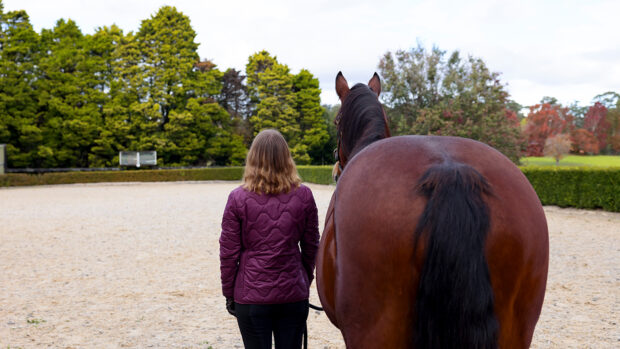There is much conflicting advice about how best to approach loose horses in a field.
Should you avoid eye contact or look them in the eye? Be bold or saunter slowly towards them? Should you hide the lead rope or show it to the horse?
In a recent research paper published in an equitation science journal, scientists reported on several experiments that addressed these questions.
Six experienced riding school horses were tested using two different approach methods in the field: first, a confident, direct approach with lead rope swinging and with full eye contact, then an indirect, relaxed approach with no rope, no eye contact and a quiet manner.
They found the direction from which the handler approached made no difference, but that the flight distance – ie the distance the horse will allow a handler to be at before reacting and running – was reduced by approaching in an indirect, relaxed manner.
The researchers then dispensed with the rope and tested the two approach styles on feral ponies.
They found that the two styles made most difference to what the ponies did when they started to move off. The direct, confident approach tended to make them trot away rather than walk – and move a greater distance.
Speed of the approach was the most significant factor – a rapid approach caused the most alarm.
Body posture and position to the horses made no difference, but handlers were generally able to move closer when they did not make direct eye contact.
The message? A calm, slow approach avoiding eye contact is the best way to avoid a game of cat and mouse.
To read all the latest veterinary research and developents see the current issue of H&H (27 September 2012)
Read more about equine behaviour



